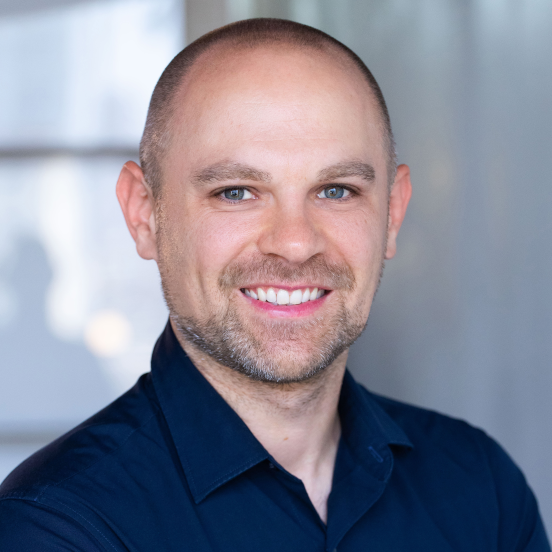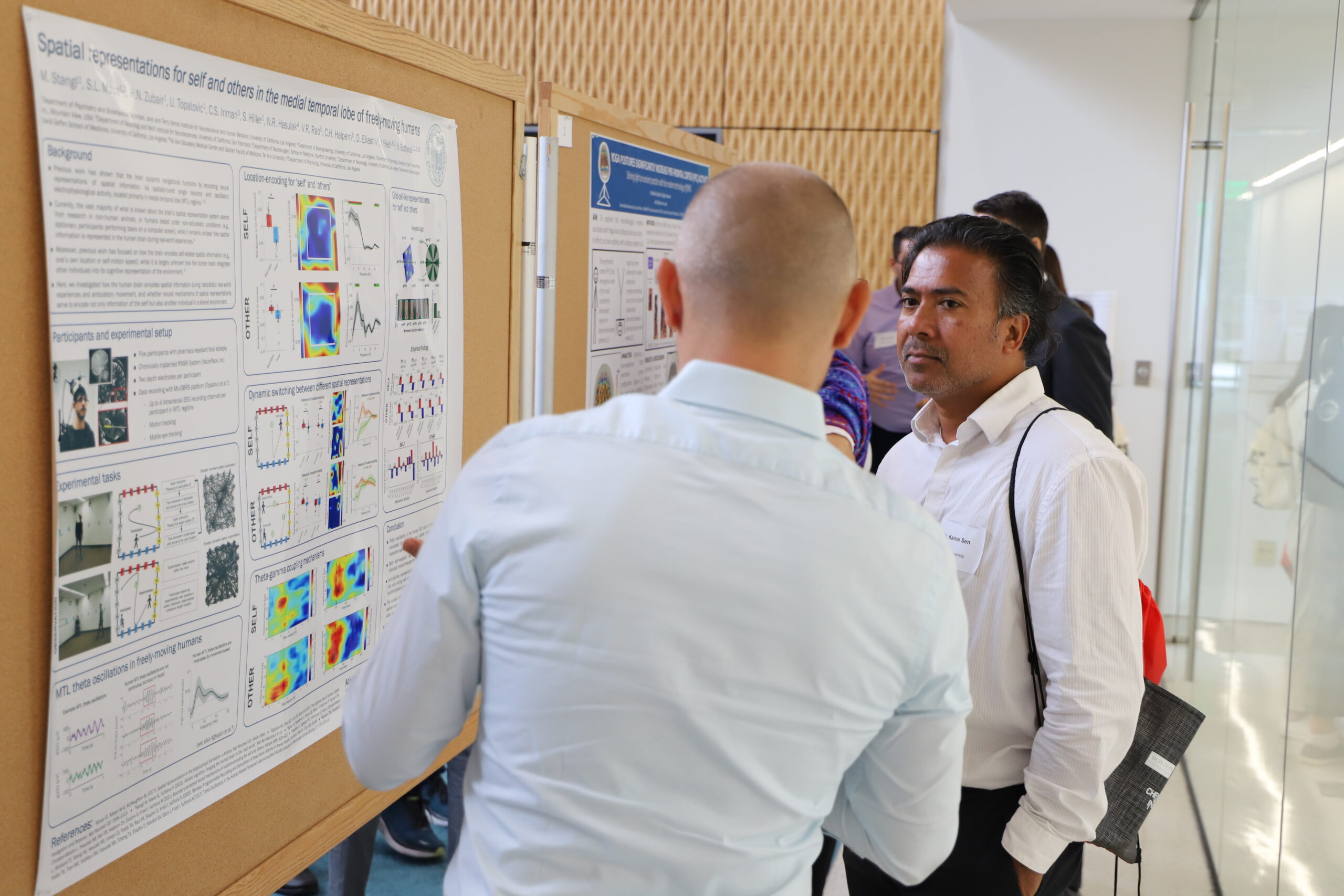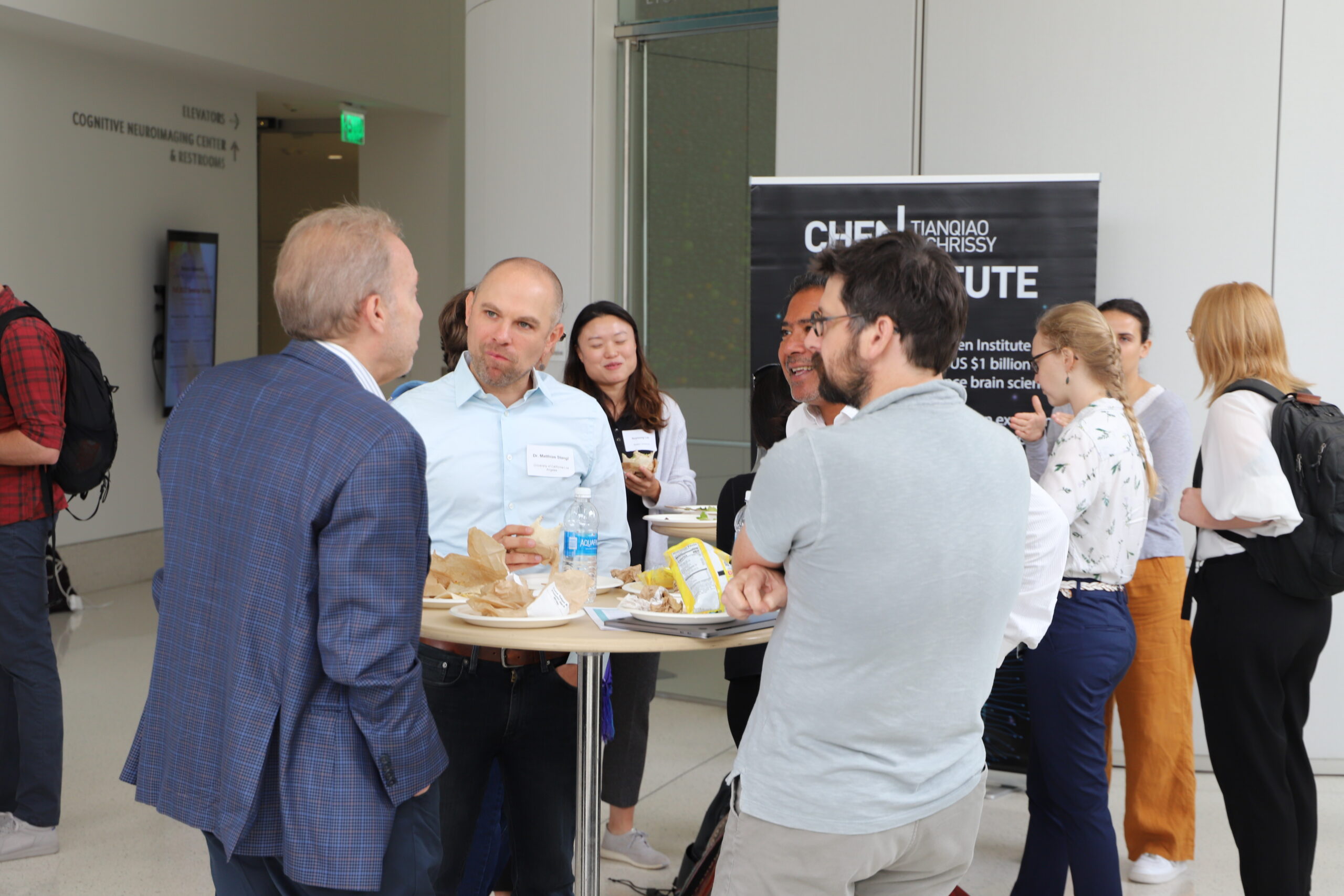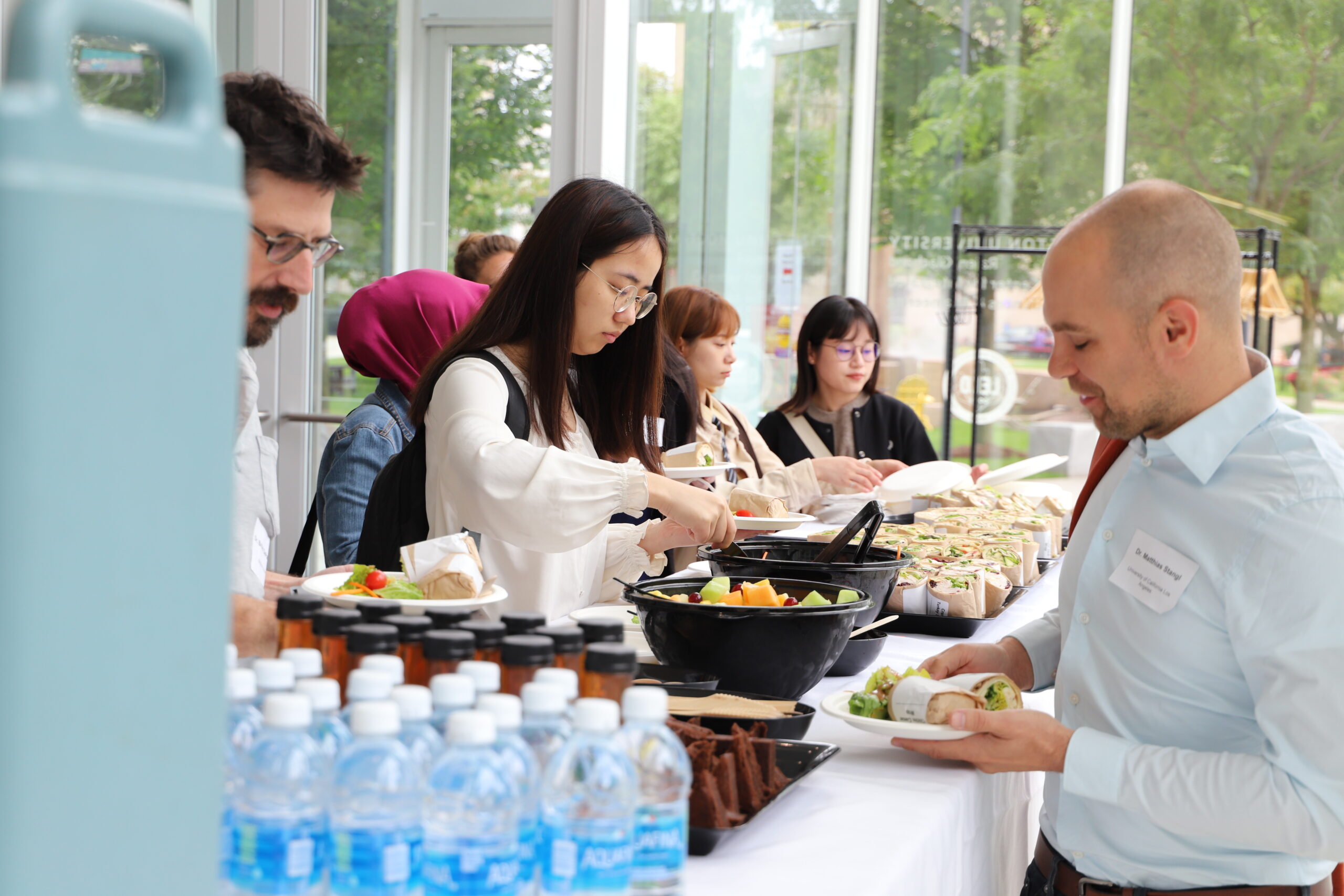Neuroscience Beyond the Lab
Incoming Neurophotonics Center assistant professor Matthias Stangl is looking into the “how” and “why” of neural mechanisms.
By Danny Giancioppo:

Neuroscientist Matthias Stangl will be joining the Boston University Department of Biomedical Engineering, the Neurophotonics Center (NPC), the Center for Systems Neuroscience, and the Cognitive Neuroimaging Center this January after an already impressive career at UCLA as a postdoctoral scholar aiming to develop a better understanding of the brain’s functionality––not only within a laboratory setting, but in the natural world. Some of his research has led to publications documenting the maladaptive neural noise produced in aging brains during ambulatory walking and spatial navigation activities, as well as insights into how our brains are able to keep track of other people. Now, in the ever-advancing field of neuroscience, Stangl hopes to expand the horizon of out-of-laboratory research in his new role at the NPC.
“Thrilled to share that I will be starting my lab at Boston University in January 2024, at the intersection of cognitive neuroscience, neurotechnologies, and data analytics,” Stangl tweeted. “We will use invasive electrophysiology and non-invasive neuroimaging to study human cognition & behavior.” One such method of study is fMRI, which enables recordings of brain activity in tightly controlled laboratory experiments.
Currently, the use of fMRI and similar neuroimaging technology, while highly generative of new discoveries every day, is nevertheless limited in its capacity for research of brain function in natural everyday life situations, due to the requirement that people remain motionless in rather unnatural environments (e.g., large “brain scanners”) while their brain activity is recorded. Because of these limitations––Stangl explained––fMRI only captures very specific aspects of neural activity that might not necessarily reflect brain activation during everyday life experiences. However, rising technologies in the field have allowed neuroscientists such as Stangl to broaden the environments of study, as well as the means of capturing that information.

Thus, Stangl’s lab work will also use novel mobile neuroimaging techniques, such as recordings of electrophysiological deep brain activity through permanent intracranial implants which allow a “real world” study of what affects the brain on a day-to-day basis. Additionally, special temporary electrode implants allow rare recordings of activation from single neurons in the human brain, thus allowing future Boston University researchers to look at neural mechanisms both within and beyond the laboratory, and across different scales, from single neurons to whole-brain network dynamics.
“We are able to ask questions we could not ask before,” explained Stangl, saying that this rapid evolution of neurotechnology has both literally and figuratively allowed him to access new angles from which to study the brain, including for those with conditions such as epilepsy. “In the past, studying the human brain in the real world and in naturalistic situations has proven to be very difficult, because traditional methods to record brain activity, especially from deep brain regions that are of critical importance for many cognitive functions, are typically limited to recordings in non-natural situations (i.e., in the laboratory) and in immobile participants. But we are now at the beginning of a very exciting new era within the field of cognitive neuroscience, where we have the tools to study the human brain in the real world and during natural everyday-life activities.” More about this can be found in Stangl’s most recent publication: Stangl et al, 2023, Nature Reviews Neuroscience, https://www.nature.com/articles/s41583-023-00692-y.
To ascertain the best results, numerous technologies that blend both neurophotonics and photonics are needed, such as the use of infrared cameras, eye-tracking cameras, audio/video recording devices, and sensor technology to perform speed and acceleration tracking. This tech helps to capture (and later analyze) data on the environmental influences, transient physical fluctuations, and external stimuli which a patient with a neurological condition might encounter outside of a lab setting. The analysis of these rich and complex datasets will further require advanced data analysis methods, such as multimodal models, machine learning techniques, computer vision, etc., which are not as commonly used in current neurophysiological studies and can be expected in his lab work.
“Importantly, I am convinced that we will get the best possible understanding of the neural mechanisms that we are interested in, and of human brain function more generally, if we use a multi-modal approach by combining the advantages of varying neuroimaging technologies and experimental techniques,” Stangl said of his lab expectations. With this approach, he hopes to not only produce new results, but to “bridge the gap” between the long-standing history of rodent research and human research, and varying cognitive neuroscience subdisciplines.
What is so advantageous about these combined methods of research is the expansion of brain activity researchers can begin to understand. For example, how our brains form mental representations of the environment that we are in, and how we integrate other people into this mapping, is of great interest. We do this countless times throughout our day without knowing it; yet our knowledge of how the brain keeps track of other people in our environment is incredibly limited.
“Until recently, we had literally no idea how the human brain keeps track of another person. Mainly because deep brain recordings in naturalistic settings and during active movements were not possible due to technical limitations,” Stangl explained. “My work has shown that we can address these questions now in the real world, in naturalistic scenarios, during active physical movement, social situations, etc. And this gives us many new insights into how the brain works.”
The multi-modal neuroimaging approach Stangl bases his research on allows neuroscientists to not only better understand the brain, but what can go wrong in given pathological conditions and why. Understanding these neural mechanisms’ functionality, as well as where they falter, provides the capacity to improve treatment for patients diagnosed with a variety of neurological and psychiatric disorders. This sort of work will be the primary focus of his lab, although Stangl does not want students to feel boxed in by his research interests.

“As a teacher and mentor, my goal is to train the next generation of scientists,” he said, as well as to learn alongside them. For this reason, one of his major goals is to keep mental health as the most “critical” priority among his researchers, as well as enhancing their professional development. “It is very important for me to focus on all aspects that are relevant for current and future researchers more generally.” This includes developing skills in research ethics, paper and grant writing, the publication and peer review process, career development strategies, and more. Additional expectations include regular check-in meetings with team members, conversations on managing the balance between research-related guidance and independence, and clearly aligned expectations between mentor and mentees.
Furthermore, Stangl hopes to create an “interactive program” with students wherein he and they work on a level playing field. He plans to teach his students everything he knows. “But I do not only want to teach my students, but I rather want to work together, and also learn from my students.” This is something which Stangl hopes to achieve through a diverse team of researchers. “People with diverse backgrounds and skills often also have different viewpoints, and I am convinced that looking at a question from diverse viewpoints will help in finding the best possible solution for the problem at hand.”
Ultimately, Matthias Stangl has high hopes for the future of neuroscience. Not only in understanding how the brain works, but when and why it does not, and how to address these issues in a long-lasting manner which can better the lives of those diagnosed with neurological and psychiatric conditions. At Boston University, he feels particularly capable of further achieving his goal to progress the narrative of neuroscience.
“What I find particularly amazing at B.U.,” Stangl said, “is that it is an extremely collaborative place, where interdisciplinary work and projects across traditional departmental boundaries are actively encouraged and supported. Also, there are such excellent people with a lot of expertise at BU across many different research areas and disciplines. I am very much looking forward to launching my lab within such an excellent research community, and in such a warm and welcoming environment, where interdisciplinary and collaborative work is not only possible but part of the institution’s culture.”
